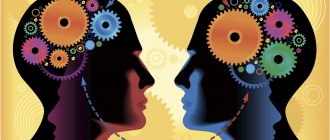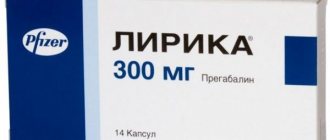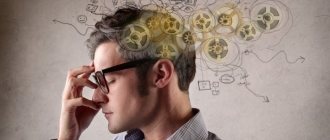Panic attacks, VSD, phobias, and OCD belong to the group of anxiety disorders (neuroses), and the official treatment regimen for such disorders is psychotherapy plus pharmacological support. If the problem is not severe, then you can do without pharmacology and solve it only through psychotherapy - working with a psychologist. In severe cases, pharmacology cannot be avoided.
The main drug of pharmacological support for panic attacks and VSD is an antidepressant. Many people think that an antidepressant is only needed for depression, but in fact this is not the case. Antidepressants have both antidepressant and anti-anxiety effects. Depending on the class of antidepressant, the anti-anxiety effect may be weaker or stronger. At the moment, the strongest anti-anxiety effect is found in antidepressants of the SSRI group, which is why they are most often prescribed for anxiety disorders and anxiety-depressive disorders.
Diagnosis
GAD is characterized by increased anxiety and worry (most days during the past six months) about a variety of events and activities, such as school or work. In addition, GAD is associated with restlessness, muscle tension, fatigue, problems concentrating, irritability and sleep disturbances.
DSM-5 criteria for diagnosing GAD
- Excessive anxiety and worry (anxious anticipation) about a variety of events and activities, such as school or work.
- The person has difficulty gaining control over anxiety
- Excessive anxiety and worry are associated with at least three of the following symptoms, affecting a person most days for at least six months: Restlessness or feeling on edge, fatigue, difficulty concentrating, irritability, muscle tension or sleep disturbances
Psychological help
Meta-analyses clearly show that CBT significantly reduces GAD symptoms. A small number of studies have compared the effects of CBT and pharmacotherapy, which have shown approximately the same effect size. Individual and group psychotherapy are equally effective in reducing anxiety, but individual psychotherapy may be more effective in reducing anxiety and depressive symptoms.
Psychotherapy intensity was assessed in a meta-analysis of 25 studies. For reducing anxiety, a course of psychotherapy lasting less than eight sessions is as effective as a course lasting more than eight sessions. In reducing anxiety and depression, more intensive courses are more effective than courses with a small number of sessions. Several studies have shown the benefits of ICBT.
The meta-analysis found no significant difference between the effects of CBT and relaxation therapy. However, more recent research suggests limited effectiveness of relaxation therapy. A large RCT found that balneotherapy, a relaxation therapy with spa treatments, was better than SSRIs in reducing anxiety; however, there are doubts about the validity of the study.
The effectiveness of behavioral psychotherapy based on acceptance, metacognitive psychotherapy, CBT aimed at correcting the perception of uncertainty, mindfulness-based cognitive therapy has been proven.
Psychodynamic psychotherapy can also provide results, but at the moment there is no clear evidence of its effectiveness.
Adding interpersonal and emotional-process therapy to CBT does not provide significant benefits compared to CBT without the addition. A preliminary conversation before starting a CBT course helps reduce resistance to therapy and improve compliance - this strategy is especially useful in severe cases.
Combination of psychotherapy and pharmacological treatment
Few data are available on the use of combinations of psychotherapy and pharmacological treatment. A meta-analysis showed that the combination of pharmacological treatment with CBT was more effective than CBT alone when comparing results immediately after treatment, but not after six months. Data are available from studies comparing the combination of diazepam or buspirone plus CBT with CBT alone. The small number of studies comparing pharmacotherapy with pharmacotherapy plus psychotherapy has produced conflicting results.
There is currently no rationale for combining CBT with pharmacotherapy. But, as with other anxiety disorders, if the patient does not improve with CBT, the use of pharmacotherapy is recommended. Likewise, if pharmacotherapy does not improve, then CBT can be expected to help. Meta-analyses and several RCTs suggest that psychotherapy benefits are maintained 1-3 years after treatment.
Psychotherapist - consultation, treatment +37544 456-25-46
Share
Anxiety disorders are a fairly common problem, and generally accepted world practice notes the difficulty of treating this category of patients. To some extent, this is due to the fact that most patients initially turn to general practitioners in connection with symptoms from the field of cardiology, neurology, gastroenterology, etc. As a result, patients with anxiety disorders usually undergo useless numerous examinations and do not receive proper treatment, which leads to a chronic course of the disease and large unreasonable economic costs.
Official opinions still differ on whether anxiety disorder is a disease. A disease can be understood as suffering from which it is necessary to get rid of it because it limits resources and opportunities, burdens and reduces the quality of life, in which case, of course, it is a disease. And it can be very difficult, since it can lead a person to social maladjustment, turning him into an almost helpless disabled person, and this, as we already well understand, despite the fact that he is objectively physically and mentally absolutely healthy. Therefore, if a disease is understood not as suffering, but as a defeat, damage, deviation from the norm of some indicators of the body, then there is nothing painful in an anxiety disorder, it is a reaction to stress developed by evolution, only overly prolonged in time.
For example: palpitations in anxiety disorders do not indicate cardiac pathology, it can only be formally a symptom of a cardiac disease, but in fact it is the body’s reaction to an emotional experience - fear, anxiety, excitement, restlessness, internal tension. And in the same way, not the heart or not only the heart, but any other organ can react to strong emotions: “bear disease” can happen to someone, and here you have “irritable bowel syndrome”, formally it’s just diarrhea, a gastroenterological problem , in essence, is the reaction of the autonomic nervous system to fear. Someone may be out of breath, so “neither inhale nor exhale”, there may be a feeling of lack of air, a desire to open all the windows, go outside to take a deep breath, and here you have it – “hyperventilation syndrome”, formally – it looks like just shortness of breath, breathing problems, essentially a vegetative reaction to a strong emotional experience.
Monotherapy for anxiety disorders is usually ineffective because it does not take into account the multifactorial nature of the anxiety disorder. Therefore, an integrated approach to the treatment of these disorders is necessary using both pharmacological and various psychotherapeutic methods.
Within the framework of ICD-10, the following main anxiety disorders are distinguished: Agoraphobia: Panic disorder: Social phobia: Generalized anxiety disorder: Specific (isolated) phobias.
It should be noted that there are a number of bodily diseases - endocrine, cardiological, neurological, which are accompanied by concomitant paroxysmal anxiety. In this case, comprehensive treatment of the underlying disease and psychotherapy for anxiety is necessary. Because without treating the underlying disease, it is impossible to get rid of anxiety, and without treating an anxiety disorder, somatic healing usually does not occur.
In many articles devoted to the topic of VSD, panic attacks and other anxiety disorders, the symptoms are well described, there are recommendations on how to cope with anxiety attacks, but the pathogenesis and causes of the disorder are practically not disclosed. Most often, the cause of pathological anxiety is the personal characteristics of a person, the conditions of personality formation, stress and conflicts.
And yet: There are causal factors, i.e. making it possible and even probable to develop panic disorder sometime in life, and there are provoking factors, i.e. causing a panic attack at a specific point in time.
CAUSAL FACTORS are associated with the physiological, bodily basis of a person; we can say that they are genetically determined and inherited. These include: anxiety, uncertainty, a tendency to experience excitement and worry about minor reasons; emotional sensitivity, impressionability, vulnerability; suggestibility, suspiciousness, sentimentality, excessive sensual openness; lability, i.e. instability, variability, inconstancy of emotions: high responsiveness of the body to emotional experiences, manifested by a set of vegetative symptoms - palpitations, dizziness, shortness of breath, nausea, sweating, trembling, sensations of heat, cold, numbness, pain, etc.
FACTORS PROVOKING the first panic attacks can be any emotional stress, the most common of which are the breakdown of personal relationships, the departure of a spouse, worry about children, illness or death of a close relative or even a beloved dog. In second place are family and work conflicts, impossible demands from superiors, and financial debt.
To no lesser extent, a panic attack can be triggered by stress of a purely physical nature. Often the first panic attack occurs: with food or alcohol poisoning; when drinking large quantities of strong coffee or tea; during intense physical or sports activity, especially in combination with energy drinks; as a result of “experiments” with marijuana, amphetamines, spice, LSD, particularly severe and treatment-resistant panic attacks with a pronounced derealization-depersonalization syndrome develop; in case of disturbance of the sleep-wake rhythm, intense work accompanied by obvious overwork, lack of sleep, “time pressure”, “zugzwang”, high responsibility; against the background of diseases for which intensive courses of antibiotic therapy were used;
Usually (if we exclude somatic causes, for example: in the form of a release of catecholamines as a result of a pathological process in the adrenal cortex and others), pathological anxiety arises as a result of a violation of the way information is processed. A person experiences anxiety because of a negative view of the world and himself, which is formed from childhood and represents basic belief patterns (the world as a danger in which a person is not able to cope with difficulties). Current states are interpreted as threatening.
Negative self-images are more often associated with rejection by others, responsibility, anxiety symptoms, and physical illness. A person with an anxiety disorder typically experiences everyday events and symptoms of stress reactions in a catastrophic way. Gradually, over time, attention is directed to increasingly smaller situations that could pose a potential threat.
The patient's sensitive attention, like a highly sensitive beam, constantly “scans” the body from head to toe, up and down, again and again; at the slightest new sensation, sending an alarm signal, accompanied by a surge of adrenaline up to a panic attack. Next comes another health complaint, another appointment with a doctor, another examination, another treatment for a non-existent disease. The process of “self-scanning” may not stop even at night, not allowing a person to sleep well, becoming more and more exhausting. These are very suffering, very anxious, neurotic patients, who are also not liked by doctors because of their forced importunity and pretentiousness: there are frequent cases of doctors being accused of incompetence, due to the fact that they allegedly cannot find the cause of the disorder, and even “they are driven to a psychiatrist as if he’s crazy.”
It is necessary to bring the brain out of the “emergency” mode of functioning. Then the person returns to peace and inner comfort, and all vegetative symptoms go away, any, just as after the flu a runny nose, cough, fever, sore throat, weakness, headache, sweating, whatever goes away - there is no need to treat each symptom separately with any there were methods to cure the flu! So in our case - we need to free ourselves from neurosis - then all its manifestations will pass. But, the essence of autonomic crises is dysfunction of the autonomic nervous system! Therefore, the beginning of any therapy is the acquisition of a resource, the therapy is symptomatic and specifically pharmacological, with the simultaneous or subsequent inclusion of psychotherapy.
Only pharmacological treatment (biological therapy) of anxiety disorders is incomparably more economical and guarantees a practical result than exclusively psychotherapeutic treatment of existing problems by a good psychologist or psychotherapist. Therefore, the state structure for providing psychotherapeutic assistance will be primarily focused on the pharmacological approach. This is highly welcomed and lobbied by pharmaceutical corporations.
Real psychotherapy is not short-term and, especially, cheap; it is a kind of luxury that not everyone can afford. This is a luxury not only in material terms, but also in time, as well as in terms of the ability to perform certain mental and volitional efforts - not everyone is able to work on themselves for months (or even years!) in order to change the usual type of relationships with others and emotional stereotypes response, while continuing to bear the burden of neurotic symptoms.
The ideal tactics for the treatment of neuroses, somatoform autonomic dysfunctions and psychosomatic disorders, accepted in the West, involve both medication and psychotherapeutic treatment. In isolation, without drug support, psychotherapy or psychological correction is carried out only in cases of individual intolerance by the patient to the necessary drugs, during pregnancy and breastfeeding, with a slight severity of neurotic symptoms, when adaptation is practically not impaired.
Therefore, the initial stage of therapy is still pharmacotherapy. Its task is to normalize the noradrenergic and dopaminergic structures of the brain and reduce the hyperactivity of the sympathetic formations of the nervous system. This problem is best solved by modern antidepressants of the following groups:
SSRI group - selective serotonin reuptake inhibitors: fluoxetine (Prozac, Profluzac, Fluval, Fluoxetine-Lannacher, Apofluoxetine), fluvoxamine (Fevarin), citalopram, escitalopram (Cipralex, Selectra, Elicea, Lenuxin), sertraline (Zoloft, Asentra, Stimuloton, serenate, Thorin), paroxetine (Paxil, Rexetine, Actaparoxetine, Adepress).
SSRI group - selective serotonin and norepinephrine reuptake inhibitors: duloxetine (Cymbalta), mirtazapine (Remeron, Mirzaten, Mirtazonal), milnacipran (Ixel).
SSRI group - selective reuptake inhibitors of serotonin, norepinephrine and dopamine: venlafaxine (Velaxin, Venlaxor, Velafax).
A group of melatonin receptor stimulants is agomelatine (melitor).
The effect of an antidepressant is manifested by the fact that the brain comes out of the stressful mode of functioning - anxiety decreases, internal tension is relieved, mood improves, irritability and nervousness disappear, night sleep normalizes, the autonomic nervous system stabilizes - for example, palpitations, dizziness, headaches, fluctuations in blood pressure stop , emotionally caused disorders of the stomach, intestines, etc. This is achieved by restoring the proper functioning of brain neurotransmitters - serotonin, norepinephrine, dopamine and other protein molecules that ensure the transmission of electrical impulses between neurons. This takes time, so the effect of modern antidepressants develops very gradually, manifesting itself no earlier than 3-5 weeks from the start of taking the drug.
The full final effect highly depends on: 1) the correct choice of drug, 2) the correct selection of dosage, 3) the correctly determined duration of treatment; 4) correct cancellation. Violation of even one of the points can lead to the ineffectiveness of the entire treatment, and such cases are widely discussed by patients on various forums, who unjustifiably consider the drug itself to be the cause of failure.
If pharmacotherapy is the main treatment in relation to psychotherapy, then taking antidepressants will be very long. The main period of treatment until all symptoms of a psychoemotional disorder are eliminated usually takes 2-5 months. After this, therapy in no case stops, but moves to the maintenance stage, which, in the absence of external aggravating factors (continuing or new unexpected emotional stress, endocrine disorders, somatic diseases, etc.) usually lasts 6-12 months, in In much rarer, but demanding cases, it can last for years.
In this case, time also heals. During the period of pharmacotherapy, various events may well occur in the patient’s life that compensate for psychological trauma: a change of job or housing, the evacuation of a mother-in-law, etc. But the main thing is psychotherapy, work aimed at changing the usual type of relationships with others and stereotypes of emotional response, the ability to be more tolerant of anxiety, etc. Pharmacotherapy should not be excessive. It is needed to delay time and help overcome pathological anxiety, cope with symptoms, and return a person to a stable state.
However, if medications are used for too long, the body's natural attempts to balance stress are suppressed. And the medications will interfere with healing. Figuratively, this is like keeping a person shackled in a cast and on crutches after a fracture has healed.
Oliver Sacks, in his book Migraine, describes the situation of a patient he was treating for migraines. Migraine is a stressful situation for the body. Szasz tells the story of a mathematician who had a weekly cycle of migraines. On Wednesday this mathematician became nervous and irritable. On Thursday and Friday his stress increased so much that he was no longer able to work. On Saturday he became extremely agitated, and on Sunday he experienced a severe migraine attack. But by mid-afternoon his migraine dissipated and disappeared. At the first sign of the disappearance of pain, this man experienced a creative rebirth, and hope again overwhelmed him. On Monday and Tuesday he felt fresh again, dressed and renewed. Calm and creatively inclined, he worked fruitfully until Wednesday, but then the whole cycle repeated itself.
By using medications to block migraine attacks, Sachs began to realize that he was thereby blocking his patient's creativity. In his book, Dr. Sachs lamented: “When I ‘cure’ this man of his migraine, I also ‘cure’ him of his mathematics.” After all, the symptoms themselves contain the very energy that is necessary for their constructive transformation. The creative healing process can be blocked in many ways—medication, an overemphasis on control, denial and invalidation of one's feelings and sensations.
Indeed, many patients have the mindset of taking a “magic” pill that will cure them of their symptoms, do not want to see the psychological component of their disorder and are focused only on the pharmacological approach. Nok sometimes wants magic, but most often he meets not a wizard, but a storyteller!
And in conclusion, I would like to say that anxiety disorders, such as panic attacks, VSD_vegetative-vascular dystonia, etc., are still not a disease, but not health!
N.V. Surovtsev
Pharmacological treatment
SSRIs, SSRIs, TCAs, benzodiazepines, pregabalin, quetiapine XR have been proven effective in the treatment of GAD.
First line
Antidepressants (SSRIs and SSRIs): RCTs show the effectiveness of escitalopram, sertraline and paroxetine, as well as duloxetine and venlafaxine XR. The effectiveness of SSRIs and SSRIs is the same. There is evidence that escitalopram is less effective than venlafaxine XR or quetiapine XR.
Other antidepressants: There is evidence that agomelatine is as effective as escitalopram.
Pregabalin: Pregabalin is as effective as benzodiazepines (level 1 evidence).
Second line
Benzodiazepines: Alprazolam, bromazepam, diazepam and lorazepam have been shown to be effective (level 1 evidence). Although the level of evidence is high, these drugs are recommended as second-line treatment and usually for short-term use due to side effects, dependence and withdrawal symptoms.
TCAs and other antidepressants: Imipramine is as effective as benzodiazepines in the treatment of GAD (level 1 evidence). But due to side effects and potentially toxic overdose, imipramine is recommended as a second-line treatment. There is little data on bupropion XL, but there is a study in which it was shown to be as effective as escitalopram (first-line agent), so it can be used as a second-line agent.
Vortioxetine, a so-called serotonin modulator, acts on different serotonin receptors. Research on the effectiveness of vortioxetine is inconsistent, but there is evidence to support its use for GAD.
Quetiapine XR: Quetiapine XR has proven efficacy and is equivalent to that of antidepressants. But quetiapine is associated with weight gain, sedation, and a higher rate of treatment discontinuation due to side effects than antidepressants. Because of problems associated with tolerability and safety of atypical antipsychotics, this drug is recommended as a second-line treatment for patients who cannot take antidepressants or benzodiazepines.
Other drugs: Buspirone has been shown to be as effective as benzodiazepines in several RCTs. There is insufficient data to compare buspirone with antidepressants. Due to its lack of effectiveness in clinical practice, buspirone should be classified as a second-line drug.
Hydroxyzine has shown efficacy close to that of benzodiazepines and buspirone, but there is insufficient clinical experience with the use of this drug for GAD.
Third line
Third-line drugs include drugs with poorly studied efficacy, side effects, and rarely used as a primary treatment for GAD.
Additional drugs
The adjunctive strategy has been studied in patients who have not responded adequately to SSRI treatment and may be used in cases of refractory GAD.
Second-line add-on drugs: Pregabalin, as an adjunct to the main drug, has been shown to be effective in treating patients who have not responded to previous treatment (level of evidence: 2).
Third-line add-on drugs: A meta-analysis showed no improvement with atypical antipsychotics as add-on drugs, but did show an increase in treatment failure. Studies of the effectiveness of risperidone and quetiapine as adjunctive agents show conflicting results.
Due to weak evidence of effectiveness, risk of weight gain, and metabolic side effects, atypical antipsychotics should be reserved for refractory cases of GAD and, with the exception of quetiapine XR, used only as an adjunct to the primary drug.
A drug | Level of evidence |
| SSRIs | |
| Escitalopram | 1 |
| Paroxetine | 1 |
| Sertraline | 1 |
| Fluoxetine | 3 |
| Citalopram | 3 |
| SSRI | |
| Duloxetine | 1 |
| Venlafaxine | 1 |
| TCA | |
| Imipramine | 1 |
| Other antidepressants | |
| Agomelatine | 1 |
| Vortioxetine | 1 (conflicting data) |
| Bupropion | 2 |
| Trazadone | 2 |
| Mirtazapine | 3 |
| Benzodiazepines | |
| Alprazolam | 1 |
| Bromazepam | 1 |
| Diazepam | 1 |
| Lorazepam | 1 |
| Anticonvulsants | |
| Pregabalin | 1 |
| Divalproex | 2 |
| Tiagabine | 1 (negative result) |
| Pregabalin as an adjunctive drug | 2 |
| Other drugs | |
| Buspirone | 1 |
| Hydroxyzine | 1 |
| Pexacerfont | 2 (negative result) |
| Propranolol | 2 (negative result) |
| Memantine | 4 (negative result) |
| Pindolol as an additive drug | 2 (negative result) |
| Atypical antipsychotics | |
| Quetiapine | 1 |
| Quetiapine as an add-on drug | 1 (conflicting data) |
| Risperidone as an add-on drug | 1 (conflicting data) |
| Olanzapine as an add-on drug | 2 |
| Aripiprazole as an add-on drug | 3 |
| Ziprasidone as monotherapy or in combination | 2 (negative result) |
| First line: Agomelatine, duloxetine, escitalopram, paroxetine, pregabalin, sertraline, venlafaxine Second line: Alprazolam*, bromazepam*, bupropion, buspirone, diazepam, hydroxyzine, imipramine, lorazepam*, quetiapine*, vortioxetine Third line: Citalopram, divalproex, fluoxetine, mirtazapine, trazodone Additional drugs (second line): Pregabalin Additional drugs (third line): Aripiprazole, olanzapine, quetiapine, risperidone Not recommended as adjunct drugs: Ziprasidone Not recommended: Beta blockers (propranolol), pexacefront, tiagabine *These drugs have their own mechanisms of action, effectiveness and safety profile. Benzodiazepines are best used as second-line drugs in most cases unless there is a risk of abuse; It is better to postpone bupropion XL for later. Quetiapine XR is a good choice in terms of effectiveness, but given the metabolic problems associated with atypical antipsychotics, it is best reserved for patients who cannot be prescribed antidepressants or benzodiazepines. |
Choosing an antidepressant for panic attacks, VSD and other anxiety disorders
Antidepressants are sold by prescription, and the prescription is written by a doctor. Accordingly, the antidepressant is selected by the doctor. But the choice of a doctor is often determined by the promotion of “their” brand or habit or some personal preference. Therefore, the choice of a doctor is not always good; old antidepressants with a large number of side effects are often prescribed. Therefore, it is better to prepare in advance, choose the option that suits you and discuss this option with your doctor at your appointment.
Escitalopram
Trade names: cipralex, selectra, elycea, esipi, esopram, esoprex, essobel, lenuxin, lexapro, miracitol, cytoles, escitam, depresan.
Today it is the most prescribed antidepressant in the West. With good effectiveness, it has the least side effects among the entire group of SSRIs and the most comfortable withdrawal syndrome.
The dosage is selected individually and varies from 5 mg to 20 mg per day. For panic attacks, they usually gradually switch to 10 mg of an antidepressant, and if after a couple of weeks on this dose the condition is not stable enough, then increase it to 15 mg. If after a couple of weeks and at this dose the condition is not stable enough, then increase to 20 mg.
Considering all of the above, escitalopram is perhaps the best antidepressant from the SSRI group for the treatment of panic attacks, VSD, social phobia and other anxiety disorders.
Sertraline
Trade names: Zoloft, Stimuloton, Asentra, Serenata, Sirlift, Thorin, Deprefolt, Zalox, Sertraloft, Depraline, Aleval, Lustral.
The dosage is selected individually and varies from 25 mg to 200 mg per day. The dosage is increased gradually until the condition stabilizes.
Sertraline is slightly stronger than escitalopram, but the side effects are also slightly higher. These two antidepressants can be taken during pregnancy, provided that the benefits outweigh the possible risks to the fetus. It is difficult to assess possible risks to the fetus; large studies have not been conducted on this topic. Presumably the risk of complications for the fetus is not high and does not exceed 5%.
Paroxetine
Trade names: Paxil, Rexetine, Plisil, Adepress, Actaparoxetine, Paroxin, Luxotil, Xet, Sirestill, Seroxat.
The most powerful antidepressant from the SSRI group. Accordingly, it has the strongest side effects and the most severe withdrawal syndrome. It is recommended to opt for it if the strength of escitalopram or sertraline is not enough to stabilize the condition.
The dosage is selected individually and varies from 10 mg to 50 mg per day. The dosage is increased gradually until the condition stabilizes. You can increase the dosage by 10 mg every week.
Venlafaxine (SSRI)
Trade names: velaxin, velafax, efevelon, effexor, venlaxor, trevilor, newelong, deprexor.
The drug, unlike SSRIs, suppresses libido less, so if the sexual sphere is important to you, then this is worth paying attention to. The anti-anxiety effect is comparable to paroxetine, and the antidepressant effect exceeds it. The side effects and withdrawal symptoms are quite strong and comparable to paroxetine.
The dosage is selected individually and varies from 75 mg to 375 mg per day. Somewhere starting from 150 mg, the effect of increasing norepinephrine appears. Given the strong side effects, for venlafaxine and paroxetine it is important to very gradually increase the dosage and use a cover drug.
Maintenance pharmacological therapy
A meta-analysis showed that long-term use of SSRIs (6–12 months) was effective in preventing relapse (odds ratio for relapse = 0.20).
Relapse after 6-18 months of duloxetine, escitalopram, paroxetine and venlayaxin XR was observed in 10-20% of cases, compared with 40-56% in the control group. Continuing pregabalin and quetiapine XR also prevents relapse after 6-12 months.
Long-term RCTs have shown that escitalopram, paroxetine and venlafaxine XR help maintain benefit over six months.
Treatment of phobias with antidepressants
Home»Articles»Treatment of phobias with antidepressants
Published: September 8, 2014 at 00:06
Phobias are quite widely represented among patients; they have their own boundaries and clinical variations. Along with such recognized variants of phobias as agoraphobia, social phobias, nosophobia, specific or isolated phobias, panic disorder, classified as anxiety disorders in both ICD-10 and DSM-4, should also be included in the phobic circle disorders.
Firstly, both the psychopathological and meaningful features of the experiences of patients during a panic attack are more typical for phobias than for anxiety: paroxysmal thanatophobia, cardiophobia, lyssophobia arise, and not anxiety, tension, devoid of a certain content. Nevertheless, fear in the structure of panic attacks is not obsessive in nature. It is, rather, fear taking over. But other phobias, traditionally classified as obsessions, are largely, if not for the most part, fears that are not obsessive, but overvalued.
Secondly, panic attacks become the source of agoraphobia, social phobia and other phobias much more often than the basis of generalized and other protracted anxiety disorders. In this case, panic attacks lose their independence and act as one of the components of the phobic syndrome.
Modern treatment of phobias
Currently, the methods of treating phobias are quite diverse. Psychopharmacotherapy actually takes the leading place in the treatment of phobias. Among the classes of psychotropic drugs, antidepressants occupy the first position, according to the results of most studies and established therapeutic practice. Next come tranquilizers and antipsychotics. The use of antidepressants and psychotherapy are first-order methods of treating phobias, which in some cases can be used independently, as monotherapy. Next come beta blockers, which, as a rule, play a supporting role in complex treatment, excluding some cases of social and isolated phobias. General vegetative stabilizing measures are practically significant, especially in the earlier stages of phobic disorders.
There are also treatment methods with limited or controversial effectiveness (laser therapy, acupuncture, the use of thymostabilizers), used as additional ones in complex therapy, as well as treatment methods with relatively high efficiency, but rarely used at present, for example, sub-shock methods.
It is also worth noting that with the advent of tranquilizers, their intensive use in the treatment of phobias began, including parenteral administration of high doses of relanium. However, a certain disappointment set in relatively quickly, after which such treatment practically ceased. The effectiveness of tranquilizers was not as high as expected. In addition, the use of tranquilizers has time limits due to the risk of addiction (the duration of a course of treatment with tranquilizers should not exceed four, and sometimes two weeks, according to some studies. The withdrawal of tranquilizers in most cases is accompanied by an exacerbation or resumption of phobias. As a result, tranquilizers, while maintaining prominent place in the treatment of phobias, have lost their dominant position. Currently, in the treatment of phobias, especially panic disorder, alprazolam, clonazepam, Relanium, phenazepam are mainly used. The latter is very promising due to the lower risk of addiction, according to a number of narcologists, and the emergence injection form.
The beginning of the use of antidepressants for anxiety-phobic disorders dates back to the 60s of the last century, when positive results were obtained in the treatment of panic attacks with imipramine. In fact, all or almost all antidepressants, both known for a long time and those that appeared relatively recently, have been used or are currently used for phobias. Tricyclic antidepressants (TCAs) and irreversible monoamine oxidase inhibitors (MAOIs) were the first to be introduced into the treatment of phobias. The latter, however, are currently almost never used to correct phobias. The main TCAs (amitriptyline, imipramine and especially clomipramine) are still widely used. With the advent of new groups of antidepressants, selective serotonin reuptake inhibitors (SSRIs), reversible monoamine oxidase inhibitors (MAOIs), the intensive introduction of these drugs into the treatment of phobic disorders began.
The most significant advantages of amitriptyline and imipramine include accessibility, reasonable cost of outpatient therapy, availability of injectable forms, and the possibility of use in children. Disadvantages: the need to use high doses, lower effectiveness compared to SSRIs (although the comparison results are not entirely clear), insufficient clarity of ideas about the mechanisms of their action in phobias, frequency and severity of side effects, including anticholinergic ones (tachycardia, extrasystole, arterial hypertension, tremor), which correspond to somatovegetative manifestations of panic attacks and other phobias and, in some cases, contribute to the strengthening of phobic disorders. It is known that anticholinergic effects occur in every fifth patient with phobias receiving amitriptyline or imipramine.
Clomipramine compares favorably with amitriptyline and imipramine in its higher effectiveness, associated with its pronounced serotonergic activity. The disadvantages associated with classic TCAs do not apply to tianeptine, a representative of the CVD group, which is used in a standard daily dose, is well tolerated and appears to be a very promising long-term treatment for phobic disorders.
Significant advantages of SSRIs compared to classic TCAs:
- higher efficiency;
- the presence of pathogenetic grounds for their use;
- lower frequency and severity of side effects;
- Great possibilities for long-term use.
However, SSRIs are inferior to TCAs in some respects. First of all, this is a non-medical disadvantage:
- currently less affordable;
- problems of long-term outpatient therapy;
- lack of injection forms for most drugs;
- impossibility of use in children and adolescents under 15 years of age (with the exception of sertraline).
Daily doses of TCAs used for phobias are quite high and approach the doses used in the treatment of severe depressive episodes. At the same time, analysis of the relevant data on SSRIs only partially confirms the well-known position about the advisability of using low doses of SSRIs for phobias, which are significantly lower than the doses used for severe depression. This is true for fluoxetine, citalopram, fluvoxamine and, to some extent, paroxetine. The daily doses of sertraline and OIMAO (moclobemide), especially often and most successfully used in phobic disorders, are close to or correspond to the maximum.
To date, the insufficiency of central serotonergic structures in phobias can be considered established, which is usually considered as their main pathogenetic mechanism. This explains the significant effectiveness found in many studies for phobias of clomipramine and SSRIs, which increase the concentration of serotonin in the intersynaptic spaces.
It is more difficult to explain the effectiveness of amitriptyline and imipramine in relation to phobic symptoms. There is a point of view that while many TCAs can be successfully used for panic disorders, for obsessions only clomipramine and SSRIs are used. However, various TCAs began to be used for phobias long before the advent of SSRIs. Amitriptyline and imipramine have a fairly high serotonin reuptake inhibitory ability, not inferior or slightly inferior in this regard to fluvoxamine and paroxetine. In addition, the effectiveness of TCAs may be partly due to their positive effect on depressive symptoms associated with phobias. The concept of the essential unity of phobias and depression should also be taken into account. Nevertheless, it is premature to reduce the pathogenetic mechanisms of phobias to the insufficiency of the functions of serotonergic structures. Most likely, the pathogenesis of phobias is more complex, and not all of its links have been established.
The effectiveness of monotherapy for phobias in all groups of antidepressants is relatively high. Compared with amitriptyline and imipramine, the effectiveness rates of clomipramine and SSRIs are slightly higher. The lower efficacy rates of moclobemide are noteworthy. However, when assessing them, it must be taken into account that moclobemide was tested mainly for social phobias, which are particularly resistant to treatment. As a result, taking into account the better tolerability of SSRIs and the possibility of using relatively low doses, they show noticeable advantages compared to TCAs. It should be noted that when assessing the immediate effectiveness of antidepressants, the proportion of patients with improvement in condition is most often determined. Significant improvement is rarely specifically identified. Long-term results of treatment of non-psychotic disorders, including phobias, are generally successful in cases where the immediate results of therapy reach the level of significant improvement. Otherwise, there is a high risk of exacerbations and relapses. According to various sources, for phobias it is 30-70%.
The antiphobic activity of specific antidepressants from the SSRI group is usually considered the same, which raises some doubts. To clarify this issue, comparative clinical trials of drugs are needed. The effectiveness of various methods of treating phobias has been repeatedly compared: monotherapy with antidepressants, tranquilizers, psychotherapy alone and their combinations, with mixed results. However, complex therapy for phobias has the largest number of supporters. Monotherapy for phobias with antidepressants is becoming increasingly popular; Long-term monotherapy with tranquilizers should not be carried out at all due to the high risk of addiction. Psychotherapy is used relatively often as the only way to correct phobias.
Indications for monotherapy with antidepressants are very limited. These are isolated phobias, monosymptomatic variants of agoraphobia, nosophobia, social phobia and those cases of agoraphobia, social phobia when the degree of generalization of pathological fears and the degree of avoidant behavior are low and phobias do not show a tendency to progress. In addition, monotherapy with antidepressants can be used as long-term maintenance treatment after a successful course of active complex therapy. For social phobias and isolated phobias that arise in one, relatively rare and predictable situation, one-time doses of beta blockers or alprazolam before the occurrence of such a situation are sufficient.
When there is a combination of different phobias, the presence of several frightening situations with incomplete avoidance, a combination of antidepressants and psychotherapeutic measures is indicated. For generalized phobias with complete avoidance, maladaptive personality, frequent and severe panic attacks, chronic or recurrent course of phobic disorders, the presence of a tendency towards their progression, the endogenous nature of phobic symptoms, the most active complex therapy is indicated, which is advisable to begin with the prescription of tranquilizers, including parenterally . Further treatment includes antidepressants, psychotherapy, and vegetative-stabilizing measures. After a month, tranquilizers are replaced with neuroleptics-behavior correctors or small or moderate doses of neuroleptics-antipsychotics.
Panic attacks often have a specific biological basis, being essentially vegetative crises with a phobic component (caused by cerebral-organic, endocrine, infectious-allergic or other visceral pathology). In such cases, correction of the somatic basis of vegetative paroxysms is of particular importance. Phobic disorders in most cases require long-term (at least 6-12 months) treatment with very slow drug withdrawal. Thus, it can be recognized that today antidepressants occupy a leading position in the treatment of phobias, either in the form of monotherapy or as the main component of complex treatment.










